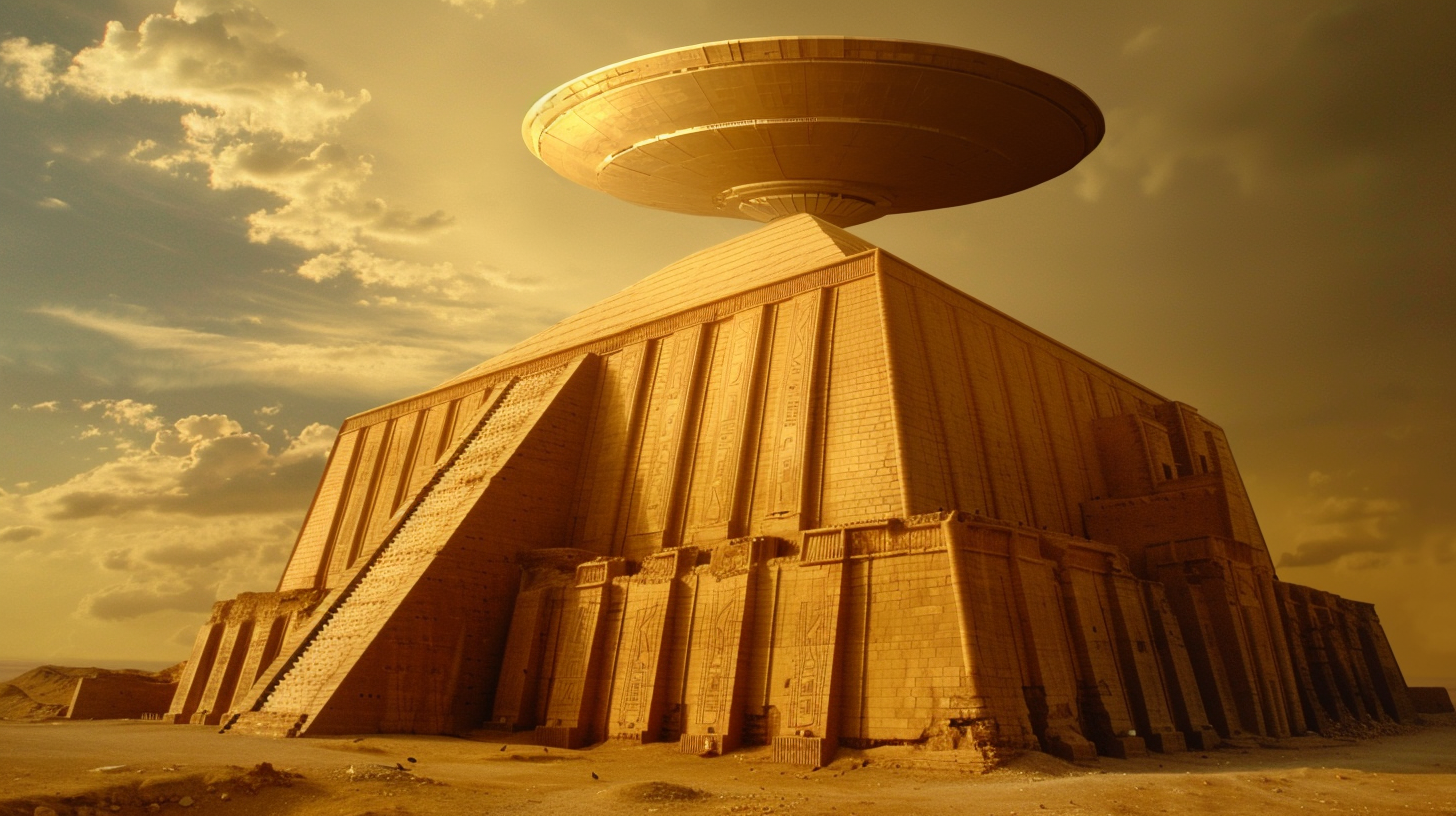Encompassed by the fertile crescent of Mesopotamia, the legacy of the Sumerian civilization showcases an array of extraordinary architectural marvels. Amidst these impressive accomplishments, the grand ziggurats emerge as temple-pyramids not only serving religious functions but also commanding significant administrative power. While conventionally acknowledged as products of human creativity, alternative views propose a more celestial purpose for these ancient structures—hinting at their possible role as platforms for cosmic communication or arrival points for entities from far-flung galaxies.

The Great Ziggurat of Ur, situated in present-day Iraq, serves as a prime example of a Sumerian ziggurat. Erected over four millennia ago, this colossal structure stands as a testament to the advanced engineering capabilities of the ancient Sumerians. Its organized design and towering presence provoke contemplation regarding its underlying intentions.
Advocates of the extraterrestrial theory propose that the structure and arrangement of Sumerian ziggurats exhibit striking similarities to contemporary concepts of communication or landing zones. They suggest that the pyramid-shaped tiers might have operated as beacons or signaling platforms, enabling interaction with advanced beings from distant galaxies. Additionally, the elevated perspective provided by ziggurats could have rendered them ideal sites for observing celestial events or approaching spacecraft.
Although the concept of Sumerian ziggurats as hubs for extraterrestrial encounters may appear speculative, it encourages a reassessment of our comprehension of ancient societies and their accomplishments. Whether perceived as symbols of spiritual reverence or as potential rendezvous points with entities from realms beyond our own, these ancient structures endure as lasting representations of the eternal mystery and fascination of the universe.
As we persist in scrutinizing and interpreting the archaeological remnants of the Sumerian civilization, we are reminded that history often conceals more complexities than initially perceived. Whether the Great Ziggurat of Ur and other Sumerian ziggurats were exclusively crafted for earthly objectives or harbored connections to extraterrestrial entities, they symbolize enduring emblems of human aspiration and the quest for knowledge and illumination.
